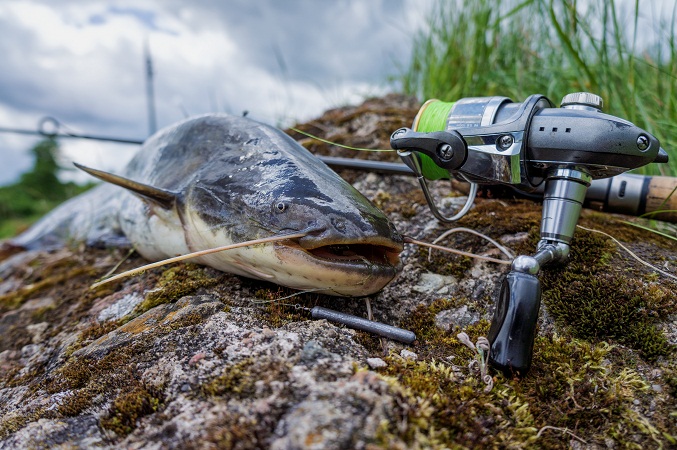Those who ignore the bad reputation that this bottom feeder has inexplicably attained know the delicious results that can be enjoyed when catching their own amazing meals, simply by following a few tried and true catfishing tips.
Catfish are a species of fish that are both freshwater and saltwater, depending on the variety. Most of them live, however, in freshwater streams, ponds, and lakes. Omnivorous in nature, catfish feed upon both vegetation and animal matter without being predatory. They simply eat what is available. Their name is derived from the sharp spines called barbels that protrude from the front of the fish’s face and resemble whiskers such as can be found on a cat. The barbels enable the catfish to feel their way around the bottom of the waterways and also to locate food.
When it comes to fishing, the way to have the best of luck landing your fish of choice is to know their habitats, their habits and what they like. If a fisherman is in an area that is amenable to catfish and entices them with the food they enjoy, they are bound to enjoy a bountiful catch. Since it is known that they can be found in streams, ponds, and lakes and also that they like trolling the bottom, one might think finding the catfish would be an easy task. There is much more to finding them than that, however. Weather conditions and seasons will all have a hand in where the catfish decide to loiter. Fallen trees that are partially or fully submerged are excellent areas for catfishing. Tips on catching catfish would include primarily having a fish finder since a great deal of underbrush is also likely to be present. Channel areas are great locations, as well, shallow waterways that lead to a deep drop off. Another type of the area to scout for optimal catfish lairs are points around breaks.
Once a prime area for catfishing has been located, the matter of proper catfish bait must be addressed. Catfish hunt for food based on scent, not sight as many other types of fish do. Imitation baits will not entice catfish; only real baits that contain high scent levels will get their attention. These baits must, in addition, be protein based; meats with bloody odor or cheeses are excellent choices that will certainly attract a catfish. Smaller fish will be pulled in using blood bait or chicken livers; baits that leave trails of scent in the water as they slowly sink to the bottom, with bits dropping off during the descent.
Larger fish will need larger bait, such as smaller fish types of perch or shad that can be either live or dead. Live bait will more easily and effectively attract the larger catfish to your hook.
Catfishing tips should also cover the type of equipment needed to bring in the big boys. A heavyweight rod that utilizes either a spinner or bait cast reel is necessary. The reel should be able to handle long line lengths; a minimum of 300 yards is recommended, but 500 plus is optimal. Large fishing hooks, either circle or treble, are needed to hook the fish without fighting to get the hook back.
Following these tips on catching catfish will reward the fisherman with high yields of catch. The flesh of the catfish is very healthy for consumption, being lower in fat with fewer Omega 3’s associated with oilier fish. The flavor is mild, and the fish can be cooked in a variety of methods including deep frying, pan frying, baking or steaming.
Before allowing the reputation of “bottom feeder” affect your decision, try these tips on catching catfish. Your reward will be a healthy and delicious meal; one that may very well become a favorite.


